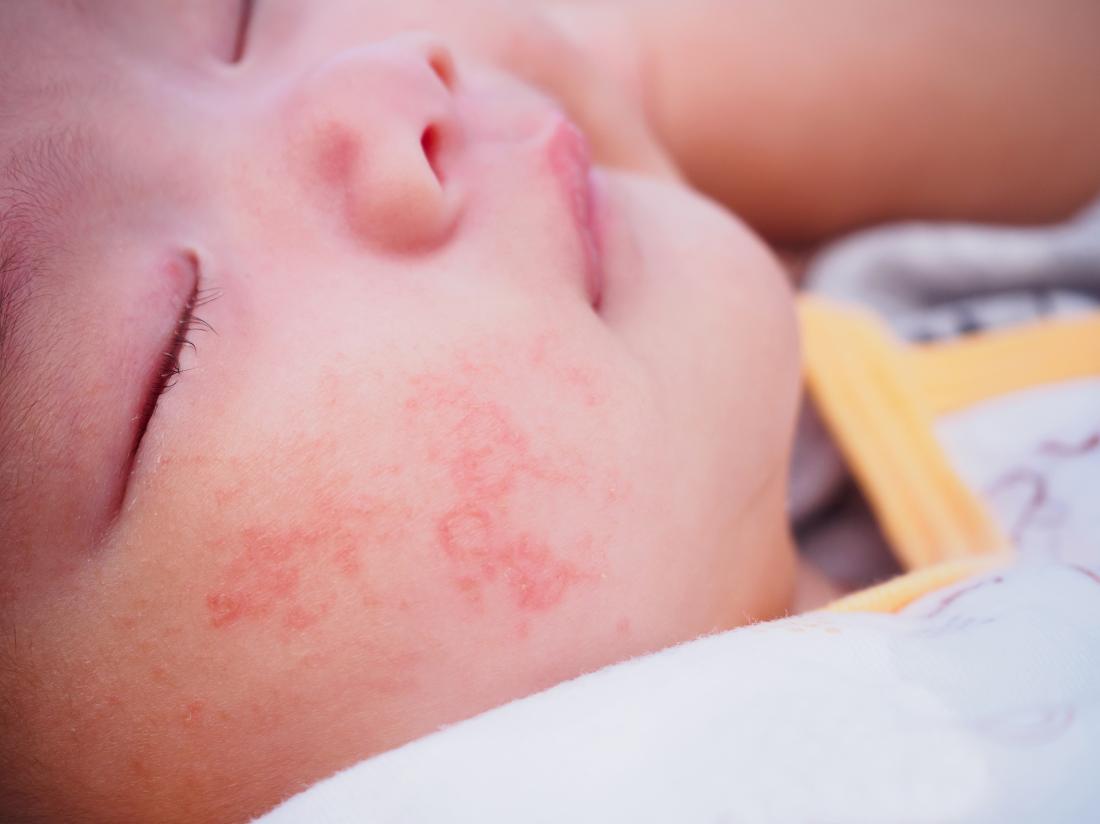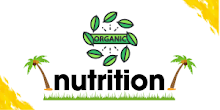A food allergy rash can appear as raised red bumps or hives on the skin. It may also be accompanied by itching.
Food allergies can manifest in various ways, and one common symptom is a rash. When certain individuals consume certain foods that they are allergic to, their immune system reacts by releasing histamine, causing the skin to become inflamed. This can result in a rash that appears as raised red bumps or hives.
The rash may be itchy and may develop shortly after consuming the allergenic food. Identifying the cause of the rash can be challenging, as it can be mistaken for other skin conditions. However, seeking medical advice and performing allergy tests can help determine if the rash is indeed related to a food allergy.

Credit: www.medicalnewstoday.com
Common Symptoms Of Food Allergy
A food allergy is a reaction that occurs when the immune system mistakenly identifies certain foods as harmful. While food allergies can manifest in various ways, there are some common symptoms to watch out for. Identifying these symptoms can help in prompt diagnosis and necessary interventions. Let's take a closer look at the key symptoms associated with food allergies.
Food Allergy Rash
A food allergy rash, also known as hives or urticaria, is one of the most visible signs of a food allergy. This rash typically appears as raised, itchy, and red bumps on the skin. The rash usually starts around the mouth and may spread to other areas of the body, such as the face, neck, and arms. It is essential to note that food allergy rashes can vary in size, shape, and intensity, and may disappear and reappear over time.
Digestive Symptoms
Digestive symptoms are another common manifestation of food allergies. These symptoms can range from mild discomfort to severe distress. Some individuals may experience nausea, vomiting, stomach cramps, and diarrhea after consuming an allergenic food. In more severe cases, there may be abdominal pain, bloating, and even blood in the stool. It is crucial to pay attention to these digestive symptoms as they can help identify potential food allergies.
Respiratory Symptoms
Food allergies can also affect the respiratory system, leading to various symptoms. These symptoms may include coughing, wheezing, shortness of breath, and a tightness in the chest. In some cases, individuals may also experience a runny or congested nose, sneezing, and itchy or watery eyes. Respiratory symptoms, especially if accompanied by other signs of a food allergy, should not be ignored and require immediate medical attention.
It is important to remember that the severity and combination of symptoms can vary from person to person when it comes to food allergies. Therefore, it is always advisable to consult a healthcare professional for accurate diagnosis and appropriate management of food allergies.

Credit: integrisok.com
Identification Of A Food Allergy Rash
Understanding how to identify a food allergy rash is crucial for both individuals with allergies and their caregivers. Being able to recognize the distinct characteristics of a food allergy rash can help to promptly seek medical attention and prevent potential complications.
Appearance Of The Rash
A food allergy rash typically appears as red, itchy, and swollen patches on the skin. It may manifest as hives, eczema, or general redness. The rash can vary in size and shape, and may have a raised, bumpy texture.
Location On The Body
Food allergy rashes can occur anywhere on the body, but they commonly appear on the face, neck, chest, and hands. In some cases, the rash may also spread to other areas of the body. It is important to note that the distribution of the rash can provide valuable clues about the allergen responsible.
Associated Symptoms
In addition to the rash, individuals with food allergies may experience other symptoms such as nausea, vomiting, diarrhea, abdominal pain, or difficulty breathing. This combination of symptoms can indicate a severe allergic reaction, known as anaphylaxis, which requires immediate medical attention.
Diagnosing Food Allergy Rashes
A food allergy rash, also known as an allergic rash, is one of the common symptoms individuals experience when they have a food allergy. Recognizing the appearance of a food allergy rash is crucial in diagnosing and managing allergies effectively. In this article, we will discuss the various methods used to diagnose food allergy rashes, including medical evaluation, skin testing, and elimination diet.
Medical Evaluation
When it comes to diagnosing food allergy rashes, a medical evaluation is the first step. During this evaluation, a healthcare professional, typically an allergist or dermatologist, will assess the individual's medical history, symptoms, and conduct a physical examination. The medical evaluation aims to rule out other possible causes of the rash and identify if the rash is indeed related to food allergy.
During the evaluation, the healthcare professional may ask the individual about their diet and any recent changes, exposure to potential allergens, and the duration and frequency of the rash. They may also inquire about other associated symptoms like itching, swelling, or difficulty breathing.
If deemed necessary, the healthcare professional may order additional tests to confirm the food allergy diagnosis, such as blood tests or skin tests. Additionally, they might refer the individual to an allergist for further evaluation and management.
Skin Testing
Skin testing is a common method used in diagnosing food allergies, including those that manifest as rashes. This test involves exposing the skin to small amounts of various allergens to determine if an allergic reaction occurs. Skin testing is safe and typically performed by an allergist or dermatologist.
The allergist will administer the allergens on the skin, often through small pricks or scratches, to observe the body's reaction. If an individual is allergic to a specific food, they may develop a raised, red bump at the test site, indicating a positive reaction. This test helps identify which foods are causing the allergic reaction and guiding the formulation of an appropriate treatment plan, including avoidance of these triggering foods.
Elimination Diet
Another method used to diagnose food allergy rashes is an elimination diet. This approach involves temporarily removing suspected food allergens from the diet and monitoring symptoms for improvement. If the rash disappears or significantly improves during the elimination phase, it may indicate a food allergy is responsible.
To follow an elimination diet, individuals are advised to work with a healthcare professional, such as a registered dietitian, who can guide them through the process effectively. The healthcare professional will help develop a suitable meal plan that avoids the potential offending allergens while ensuring the individual receives adequate nutrition. They will also guide the reintroduction of eliminated foods one at a time to observe if the rash and other symptoms reappear.
In conclusion, diagnosing food allergy rashes involves a multi-faceted approach that may include medical evaluation, skin testing, and elimination diet. Seeking professional help and guidance from healthcare professionals, such as allergists or dermatologists, is essential in determining the cause of a food allergy rash and developing an appropriate management plan.
Effective Management Of Food Allergy Rashes
When it comes to food allergies, one of the most common symptoms people experience is a food allergy rash. This type of rash can range from mild to severe and can cause discomfort and distress to those affected. Understanding what a food allergy rash looks like and how to effectively manage it is crucial in ensuring the overall well-being of individuals with food allergies.
Avoidance Of Allergenic Foods
Allergy management starts with the avoidance of allergenic foods. Identifying the specific food or foods causing the allergic reaction is essential in preventing the occurrence of a food allergy rash. Food allergy tests conducted by allergists can help identify which foods need to be avoided.
Upon identification, it is important to carefully read food labels to avoid any potential allergens or cross-contamination. Some common allergens include peanuts, tree nuts, milk, eggs, wheat, soy, fish, and shellfish. By actively avoiding these allergenic foods, individuals can significantly reduce the chance of developing a food allergy rash.
Medication Options
Although avoidance is the primary method in managing food allergies, there are medication options available for those who accidentally consume an allergenic food or experience symptoms despite precautions. Antihistamines are commonly used to alleviate mild allergic reactions and can help reduce the severity of a food allergy rash.
For more severe reactions, individuals may require the use of epinephrine auto-injectors, such as EpiPen, as a lifesaving measure. These emergency medications are designed to quickly reverse symptoms and should be administered following proper guidelines provided by healthcare professionals.
Emergency Preparedness
Emergency preparedness is crucial for individuals with food allergies, especially when it comes to managing a food allergy rash. Having an emergency action plan in place can help minimize the risks associated with severe allergic reactions. This plan should outline steps to be taken in case of accidental ingestion or exposure to allergenic foods.
In addition, individuals with severe food allergies should always carry their prescribed epinephrine auto-injectors, as well as any other necessary medications, with them at all times. Informing family members, friends, and coworkers about the allergies and the steps to be taken during an emergency can also prevent delays in receiving appropriate medical attention.
In conclusion, effectively managing food allergy rashes is crucial for individuals with food allergies. By avoiding allergenic foods, using medication options when necessary, and being prepared for emergencies, individuals can minimize the occurrence and severity of food allergy rashes. Understanding the symptoms and being proactive in managing food allergies is essential for maintaining a safe and healthy lifestyle.

Credit: www.myallergydr.com
Conclusion
Understanding the appearance of a food allergy rash is vital for early detection and prompt treatment. By being aware of the various forms and symptoms of food allergies, you can better safeguard yourself and your loved ones. Remember to be attentive to any changes in your body after consuming certain foods and seek medical attention if a rash appears.
Stay informed and take proactive measures to manage food allergies effectively.







0 Comments